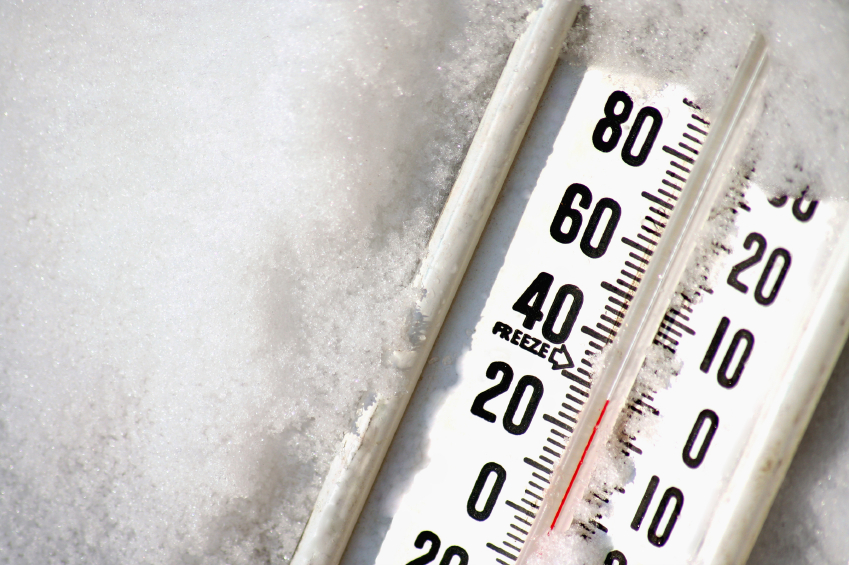If the premises of Obamacare are correct, then we can get a two-fer: The regulatory methods guiding Obamacare can solve the problem of uninsured Americans and global warming in one fell swoop. Al Gore might need to find a new cause. Just follow the logic from economics to physics, and see how global warming can be solved as easily as healthcare.
TEMPERATURE
Price is to the science of economics what temperature is to the science of physics. Both are numbers. Both are measurements of a moment and place, snapshots of changing, dynamic processes. Both represent incredibly complex systems relevant to many other aspects of their respective sciences.
Heat is a quantum of energy, transferred from one mass to another. The amount of heat energy in any system is constantly changing—increasing or decreasing, depending on all kinds of variables and how they interact with one another. Temperature is nothing but a numerical representation of how much heat energy is present at a particular spot in space and time.
All temperature scales are relative, typically to constants like the freezing or boiling points of water, or absolute zero. But whatever scale, temperature always represents an external reality. Changing the calibration—calling 32 degrees Fahrenheit, for example, what is 0 degrees Celsius, or 273 degrees Kelvin—in no way affects the external reality these numbers represent. In every case, it’s the temperature at which water freezes.
PRICE
In a similar way, supply and demand within any economic system are constantly changing—increasing or decreasing, depending on all kinds of variables within a market of ongoing exchanges. Price is a numerical representation of how much supply and demand are present at a particular spot in space and time, a snapshot of dynamic economic activities and many variables that affect them.
Add in money supplies, local and global, changes in production costs, research and development, delivery costs, marketing costs, opportunity costs, effects of time and nature, and many other factors, and we begin to see that prices represent a deeply complex web of constantly changing information.
Like temperatures, prices are relative, measured against an absolute zero—zero dollars and cents—the point at which a thing has no economic value to anyone. Any price above zero means there is some demand, just as any temperature above absolute zero means there is some molecular motion and heat.
Also like temperatures, prices reflect an external reality. Whether measured in dollars, yen, marks, or pinecones, increasing prices reveal much, as do decreasing prices, within a given market and related markets. Price is perhaps the single most important piece of information in helping those with capital decide where investment makes sense and where it will be used most effectively, versus where not.
OBAMACARE AND GLOBAL WARMING
The premise of Obamacare is that government bureaucrats can alter the laws of economics and change prices by bureaucratic fiat. If they think health insurance costs too much for some people, Kathleen Sebelius and her drones at HHS can simply regulate lower health insurance premiums.
Backed by the power of law, bureaucrats can require some people to buy health insurance who neither want nor need it, so others who are far greater risks and likely to incur far greater expenses can have health insurance at prices far lower than what an open, free, fair market would offer. Why pay $500 per month, after all, when Obama and Sebelius say it should cost only a fraction of that?
Very well. Let’s change prices by regulation. But let’s be consistent: We’ve established that prices represent an external reality. If government bureaucrats can bend the laws of economics, why can they not bend the laws of physics as well? Why not solve global warming the same way we are “solving” the problem of health care?
Here’s how: Let’s gather the most accurate temperatures from around the globe and average them. Whatever that number is, through bureaucratic regulation let’s call it 10 degrees less. Or 20, just to be safe. Next time Al Gore reminds us that Earth has a fever, we can assure him that Earth’s temperature is actually 20 degrees lower than he thought, because U.S. government officials said so.
Silly, right? But the laws of economics are no more humored by attempted manipulation than the laws of physics. Thinking that bureaucrats can change prices arbitrarily without disastrous consequences is as wrong-headed as thinking that temperatures can be changed by bureaucratic will. They are both comedies of colossal errors, both fraught with danger, and neither is funny.

